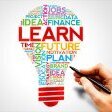Leaderboard
Popular Content
Showing content with the highest reputation on 02/25/2021 in all areas
-
First Job always has a special place! The one thing that we desperately wait for during our entire high school and college life is that first job. We have hopes and dreams, aspirations and expectations, slightly nervous, the excitement level is on the highest peak you we imagine. Our first job, whether it's an internship or a full-time one is important for many reasons. It determines your career. Getting exposed to an industry: More important than the employer is the industry in which we’re getting into. If we go to work for an insurance company, we’ll gain knowledge and eventually some expertise in the insurance field. Likewise, if we go work at a company like Facebook, we’ll be in tech and more specifically in the media space. Whatever job we choose, make sure we have some interest in the industry to which the employer belongs and think about where we like to spend some meaningful amount of time. Doing the job itself: The actual work we’ll be doing will move us to specialize in a certain area and we’ll gain a specific set of skills. Having an idea of what kind of work we’ll do in a job will give us insight into what types of skills we’ll acquire over time. Make sure these are the skills we want to develop. Building your professional network: Our first job is not just about what we do but also about whom we do it with. Having good colleagues with whom we can collaborate makes all the difference in the world. These are individuals who will help us in our career. The right group of co-workers can help increase chances of being successful both at our current job and throughout our career. My first job is very special to me 🙂 , I was BTECH student when I started my career as Trainee in Human Resources Department. I went for an interview for random tach profile but I was shortlisted for HR Trainee on temporary bases. Whatever I am today all I have learnt from this job and company (good team members, nice environment) overall happy but struggling as well. I was not aware what HR do in the company. I learned, I made mistakes, I thought so much what I am doing but in the end I grow and now I am working as HRBP in MNC. I believe if we dedicate our self in what we have to do and our goal is clear we can achieve anything then. 🙂 First jobs are the hardest, yet the most loved 🙂5 points
-
2 points
-
2 points
-
2 points
-
Having been a trainer in leadership for the last 20 years, a visiting faculty in leadership related behavior at organizations like the IIM and ISB, having consulted and coached in over 20 countries in Asia and Africa, also heading my own organization and having a business degree from IIM Calcutta I do believe I have a grip on what leaders need to have in the new era which is coming up birthed through covid, but already popular through terms like the VUCA era. It becomes imperative that organizations need both left brain and right brain leaders who can manage in these troubled times and lead organizations through the shoals of uncertainty and volatility. let’s get down to the list and see why these may be the key skills all leaders need to build What will your second career in the Gig economy world look like Motivate Others And Building High Performing Teams Analytics Skills Emotional Intelligence Digital Intelligence And Technology Skills Innovation And Design Thinking1 point
-
This blog is written on the basis of a video lecture hosted by Ms Nandita Sanker. A Delhi University Graduate, she has an Advanced Strategic Management Qualification from IIM Indore. She started her career with Global Advertising Agencies like Saatchi and Saatchi and RK Swamy BBDO in the creative function, extremely successful she grew quickly into the role of a creative director. Her interest in Training caused a mid-career switch to Learning and Development which has been her forte for the last 20 years. A global Trainer and Consultant she traverses the globe conducting training and Organizational Development interventions in countries like Egypt , Jordan , Australia , Indonesia and India. She has worked with over a 1000 organizations conducting open workshops and In-company interventions. This blog is co-authored by Ms Nyaya Praharsha, Masters Graduate in the field of Mass Communications and Media Studies from MCC, Chennai. With extensive experience in media, both written and spoken, she has developed the skills required for content creation. Every trainer, tutor and teacher have always come across different types of participants or students. We’ve broken down all the different types of participants trainers encounter and made a list of 3 major types. This blog speaks of the 3 different types of problem participants that trainers encounter in their sessions and also gives tips on how to handle these types of participants, Type 1: The WASPS: W: Willing A: Active S: Smart P: Persistent S: Show offs This particular type of participants are not necessarily negative. They are extremely enthusiastic participants who are hyper active in classes. They know all the answers and do not hesitate in showing it off. This active, extroverted nature could hinder the learning process of a few participants who aren’t all that quick or active. Tips to Handle WASPS: You don’t want to shut them down completely. Sometimes this enthusiasm even boosts your spirits to teach. But there are times you want them to tone down a little. These tips are useful for those times. 1. Give them recognition 2. Look and smile at them. 3. Incorporate their ideas in your summaries 4. Tactfully interrupt 5. And if it does not stop, avoid eye contact. 6. Make sure that your body language shows them that they need to tone down a little but not in a way to discourage them completely. Type 2: The SLUGS: S: Slow L: Lethargic U: Uninspired G: Gloomy S: Sad These types of participants are usually very disinterested in the happenings around them. They seem absent minded and just not present in the moment. They pay no attention to what the trainer is saying. They don’t bother involving themselves in the activities either. They usually bring down the energy in the other participants and also sometimes the trainer. And for this reason, these types of participants and their behavior must be acknowledged and stopped. Tips to Handle SLUGS: No matter how old your audience and how mature they are, it is up to the trainer to keep up the pace in any session. Handling this type of participants and not letting the energy levels of the class slip down is one of their responsibilities as well. 1. Encourage involvement 2. Ask them simple questions 3. Maintain extra eye contact 4. Talk to them privately and see if there is a personal issue hindering their attention levels. 5. Team them up with a WASP. Type 3: The TOADS: T: Turned off O: Obstinate A: Aggressive 😧 Demanding S: Smart-Alec This is the type of participant that no trainer would want to have in their classes. They constantly have an attitude that makes the host lose grip over what has be taught. These are also the participants that need to be shut down quickly so that the entire session is not disrupted or lost. Tips to Handle TOADS: It is important to know how to tactfully yet sharply control your participants solely because they are all professionals and definitely experienced. But it is necessary for the trainer to maintain control over his classes and participants. 1. Remember to take the remarks and attitude of TOADS professionally rather than personally. 2. Speak with them one-on-one with them and try to understand the root cause of their behavior 3. Acknowledge their concern. Keep these types of participants and tips to handle them in mind the next time you take a session. That way you as a trainer will have control over your sessions and it will flow more smoothly.1 point
-
Thank you Ms.Subhadra for sharing your experience. First job experience comes once and remains special for us all the time!!!1 point
-
thankyou for sharing useful information, it will be helpful in my workplace to do work effectively1 point
-
5 ways to make sending cold emails more effective, including email templates to use 1. Use an action-focused subject line If your email isn't opened, it doesn't matter what it says. I recommend sending emails first thing in the morning or in the evening and using short, specific phrases with a sense of urgency. A great subject line for example would be: "Call: 123 John Street property" or "Follow up: potential investor." 2. Condense your message to fit on a phone screen The entire message needs to be readable on a phone screen (without scrolling). The message should be between four to eight sentences. Make sure the spacing is correct and doesn't look like a thesis paper. 3. Acknowledge a problem and propose a solution Ideas and PowerPoints don't close deals - problem solvers get to make the elevator pitch. Use your email sentences to convince your prospect that you understand their issue and can solve their problem. Very important: Use links instead of attachments because attachments can get left out of the email if it is later forwarded to the correct person. 4. Include all contact information in email signature The purpose of the cold outreach is to set up a warm telephone call. Include your email and cell phone number in your email signature. Include a LinkedIn link as well so your prospect can easily view your professional background without having to do any extra work. 5. Provide notice for a follow-up It takes between two to five outreach attempts to secure a meeting. Mention that you understand your prospect is busy and will drop them a line next week to follow up. If your cold email is successful and a call/meeting is set up, always send more information in advance. After five attempts without a response, it's safe to say you should focus on other prospects.1 point




.thumb.jpg.bc4009eb98fe4dfe7b292048cbc85e41.jpg)



